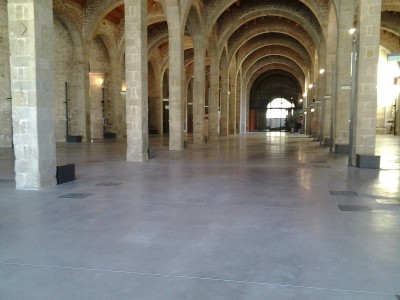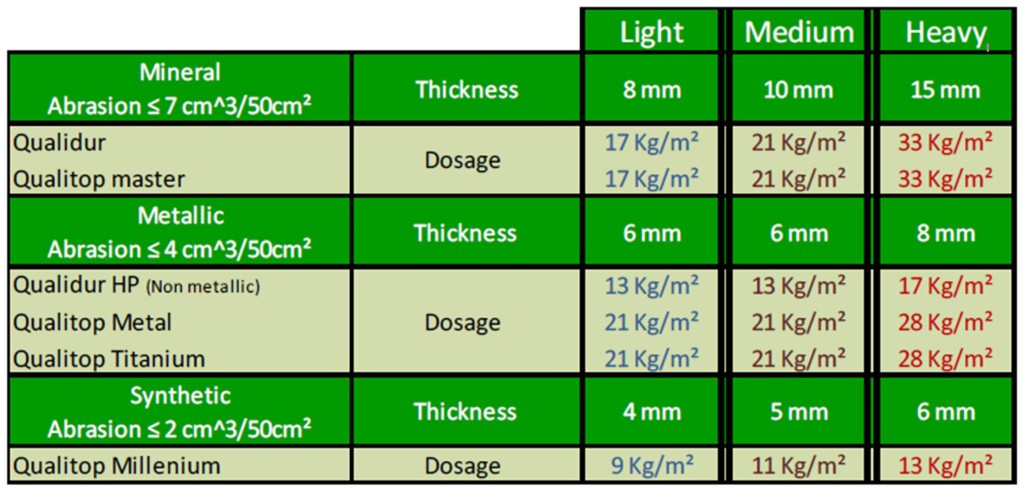Understanding the true ‘cost’ of a concrete surface hardener
When calculating the cost of a dry-shake (also called a concrete surface hardener) for an industrial floor it can be tempting to compare only the price per kilogram.
But this fails to take into account an important factor: the dosage that is needed to achieve the required abrasion resistance.
As our previous article explains, abrasion resistance can be quantified using the Boehm test, where the surface of the concrete is worn away using an abrasive disk, and the degree of wear is measured.
Some concrete surface hardeners are specifically designed for lighter duty environments, where the risk of abrasion will be minimal. But if you use such a dry-shake in a hard-working building you will probably need to apply twice as much to get the abrasion resistance you need.
However, a dry-shake concrete surface hardener designed for a heavy-duty environment (such as Qualitop Millenium) may be more expensive per kilogram, but you will need a much lower dosage to achieve good abrasion resistance.
The chart below shows the recommended dosage rate per m2 for our concrete surface hardeners to ensure a minimum level of abrasion resistance according to the Boehm test. It’s clear to see how a cheaper dry-shake will easily work out to be more expensive when the size of the floor and the dosage is taken into account.
Scrimping on the dosage will simply mean that the floor will wear prematurely. The cost and inconvenience of floor repairs will far outweigh the cost of using the right concrete surface hardener in the first place.
Another factor to consider is the transport cost. Surface hardeners are heavy; so if you buy a greater quantity of a cheaper dry-shake, the product cost saving can be eaten up in transport costs – and this is another way that a ‘cheaper’ product can actually work out to be more expensive.
All of a sudden that ‘cheap’ dry-shake isn’t looking so cheap after all!
The best approach to choosing a dry-shake is not to start by looking at the headline price. We recommend you consider the following questions:
- What will this building be used for – eg, general warehousing, or something more specific such as food production or electronics manufacturing? What kind of substances may be spilled on the floor? Are there any other special considerations for this building, now or in the future?
- How hard will this floor need to work during its lifetime? What kind of traffic will it be subjected to? What kind of risks are there of impact or abrasion – dropping or scraping?
- Is there a specified level of abrasion resistance, according to the Boehm test, that this floor must meet?
- How long does this floor need to last? For the most durable results, consider a fresh-on-fresh (also called wet-on-wet) application. It will require a greater concentration of dry-shake, but the floor’s durability over time will be greatly increased.
By having a wide and versatile range of concrete surface hardener options, we’ve made it much easier to value-engineer a floor’s surface. The floor’s performance can be greatly improved, without adding substantially to the cost – which is good news for contractors and clients alike.
Our technical advisers will be happy to talk through this process, and work through the calculations with you for your next project, so you can make an informed choice.





